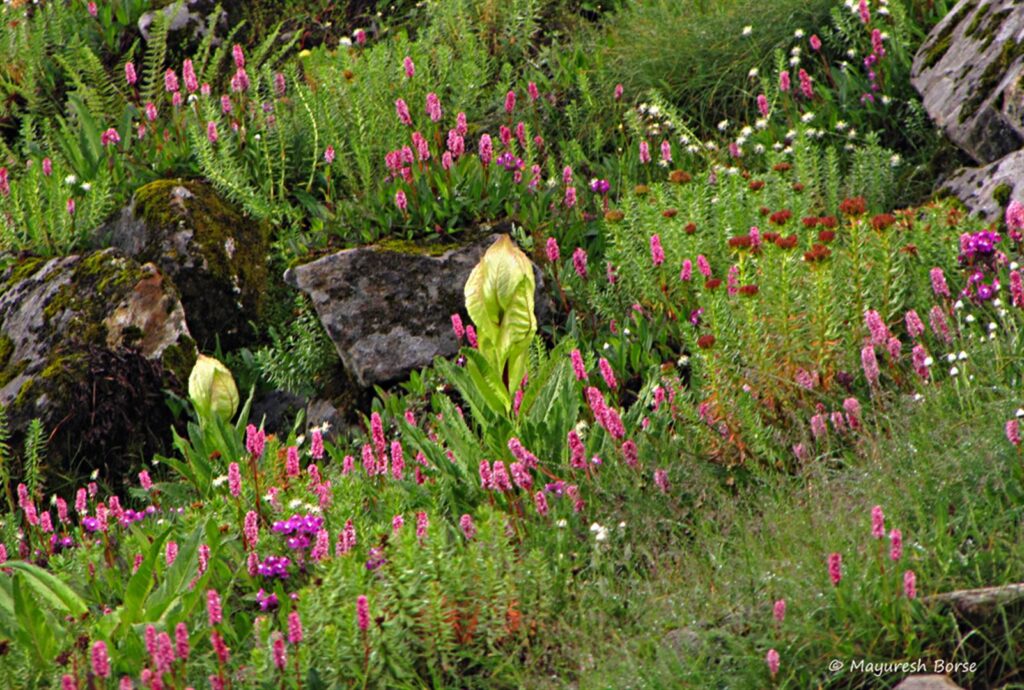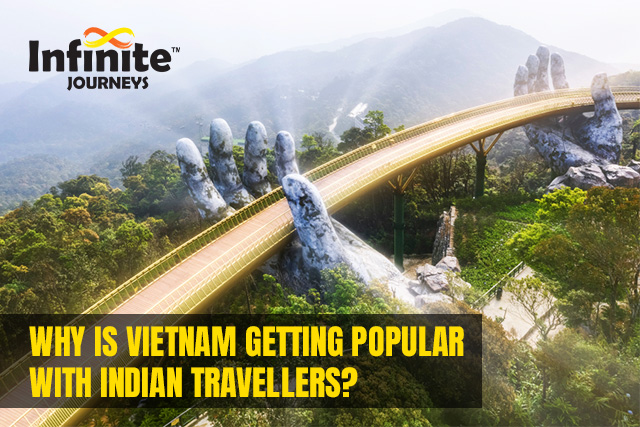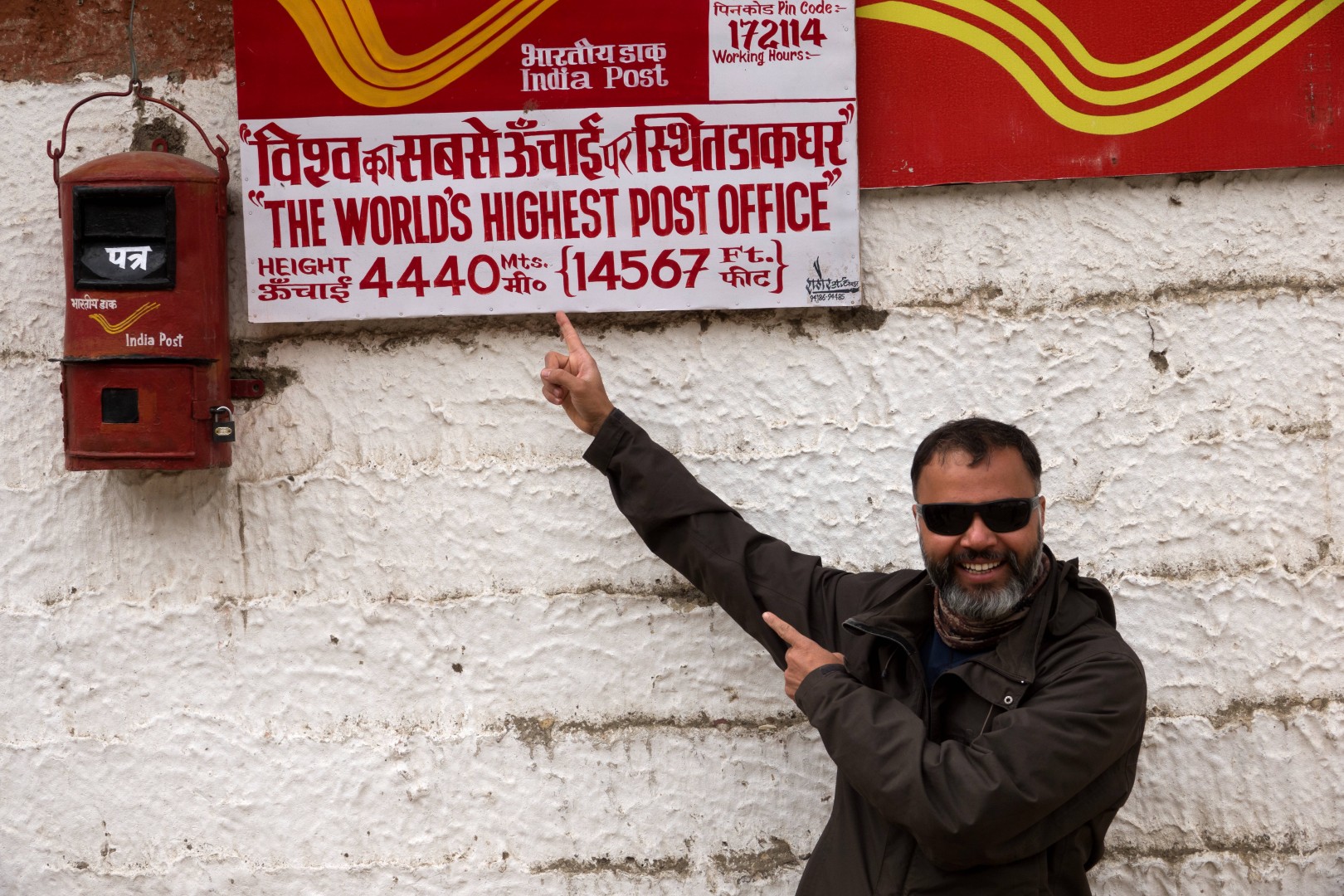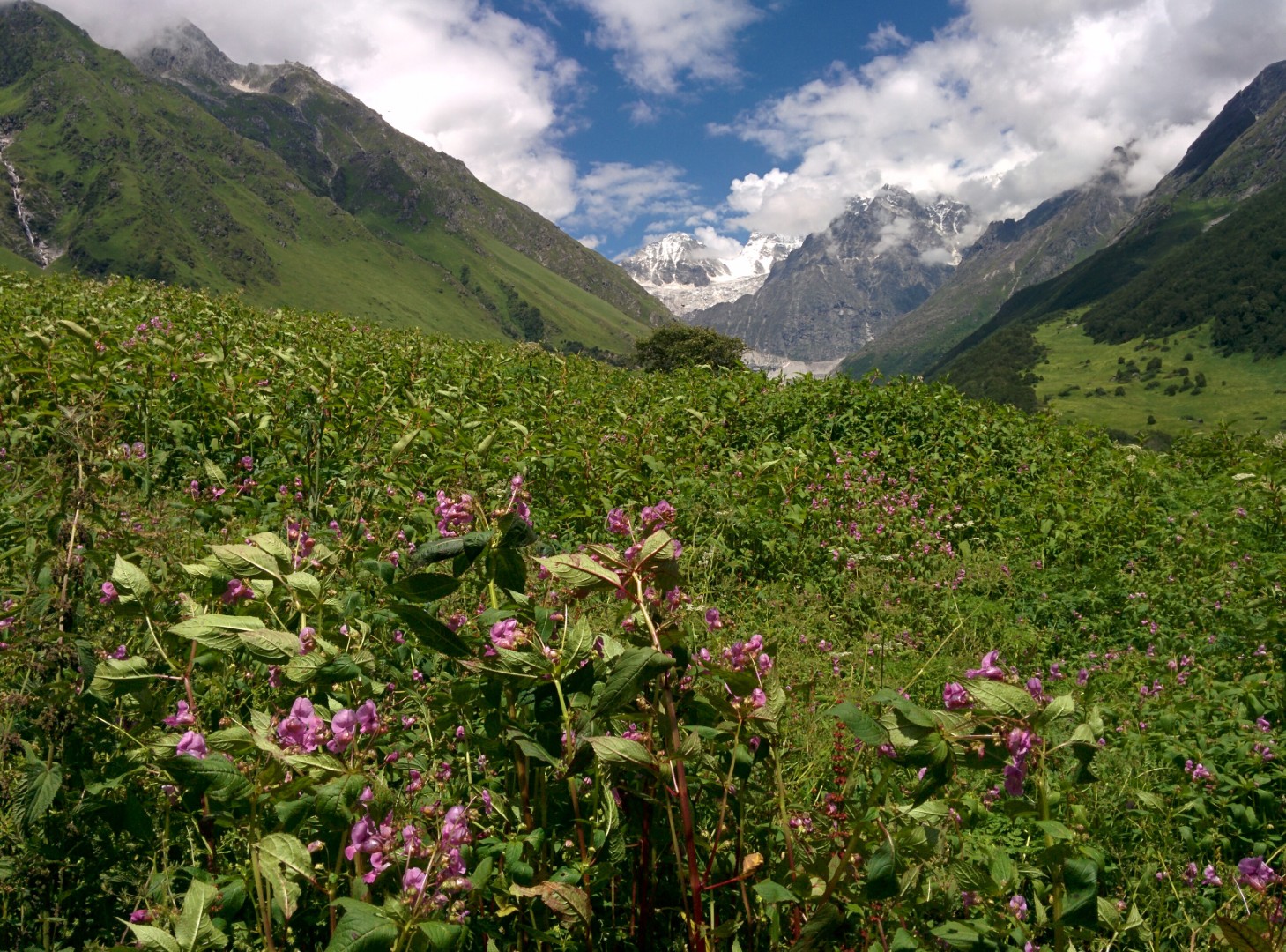The Valley of Flowers and its marvelous display of flowers makes this place a must visit. At the same time, did you know that The Valley of flowers has an interesting history and mythology associated with it?
History records that Valley of Flowers was not “discovered” till 1937! Mythology tells us that this place and the region around were frequented by the Gods and Pandava Heroes…
If you are planning on going for the Valley of Flowers trek, read on for tales on this astonishing place!
While on this, do have a look at our blog post, “The Valley of Flowers Trek – Introduction“. Once we have enticed you with the stories, you would want to visit The Valley. This blog post will then come handy to get you started 🙂
Discovery of Valley of Flowers and the people associated with it
Interestingly, the Valley of Flowers was not discovered till the 1930s! Today a protected site, the Valley of Flowers was first ‘discovered’ by an English mountaineer, photographer, and botanist – Francis Sydney Smythe. In 1937, Smythe, along with fellow mountaineers – Eric Shipton and R.L. Holdsworth accidentally stumbled upon the Bhyundar Valley as they lost their way back from their trek to Mount Kamet! Later in the year 1938, he went on to write a book called “The Valley of Flowers” in which he says that this valley is ‘a pleasurable escape’ for any nature lover.
In 1982, the area was declared a National Park of India.
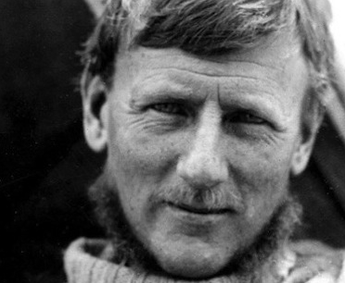
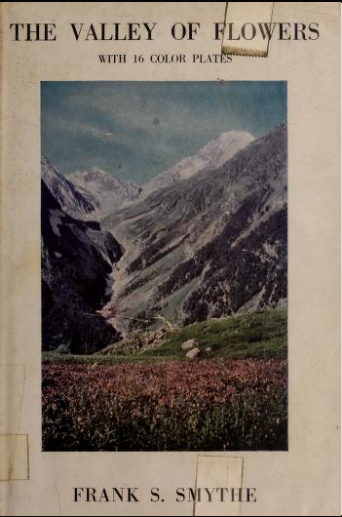
Memorial Of Joan Magaret Legge
The Valley of Flowers history and mythology blog has an important place for another English lady who lost her life in the Valley, Joan Margaret Legge.
After reading Frank Smythe’s book, Lady Joan was inspired to travel to the Valley of Flowers. This trip was then sponsored by Edinburgh’s Royal Botanic Garden. English botanist Lady Joan Margaret Legge – daughter of William Legge, 6th Earl of Dartmouth – unfortunately died while collecting alpine specimens for research here in the Valley of Flowers. On the day she died, Lady Joan was collecting alpine samples along the slopes of Khulia Garva. The locals helped recover her body which was then buried at the same place at the request of her sister – Lady Dorothy Legge. A year later, Dorothy places a marker over her sister’s shrine, a place which is even today frequented by many tourists.
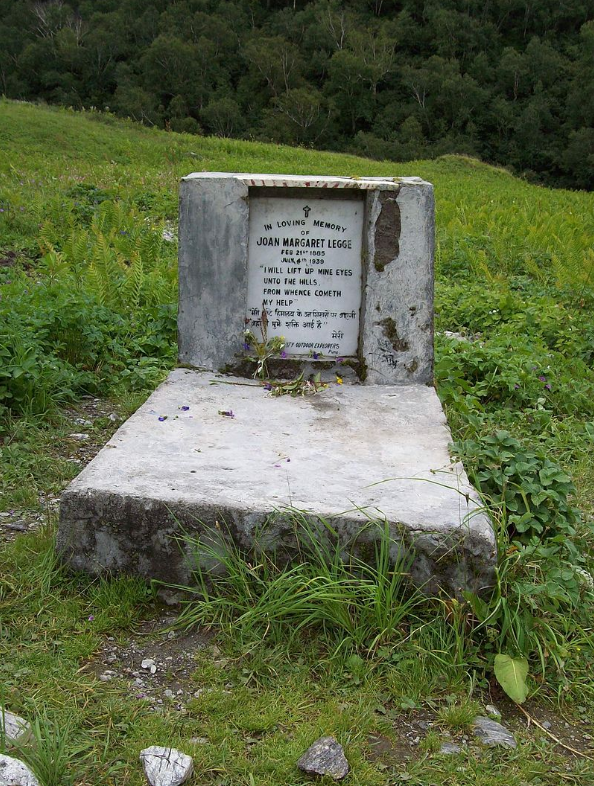
Ever wondered why a Gurudwara was made at 4,329 meters?
Sikhs believe that this was the place where their tenth and final living Guru – Shri Guru Gobind Singh – meditated till he finally achieved union with God. For this reason, the Gurudwara Shri Hemkund Sahib Ji is one of the holiest Sikh shrines.
The Guru, in his book, has mentioned that, in his previous birth, he had meditated in the Himalayas, next to a glacial lake that is surrounded by seven mountain peaks! The place was called “Sapat Shring” in his book “Dasam Granth”. In the late 19th century, the Sikhs started their search for such a place. Early attempts date back to 1884. The search continued for year and in the year 1936, the first-ever Gurudwara was built here. Over the period of the next few decades, the Gurudwara underwent a few changes. From the 10 feet X 10 feet stone Gurdwara in 1935 to a big gurdwara today that is in the shape of an inverted lotus.
Devotees who visit the Gurudwara take a holy dip at Hemkund Lake (also called the Lokpal Lake). This Gurudwara is located right next to the lake. Also located here is a Hindu temple – Lokpal Temple. Lokpal is another name for Lakshman, younger brother of Lord Ram. It is believed that Lord Lakshman meditated at this lake. Many also believe that four magical herbs that made up the Sanjeevani Buti were found in the area surrounding the lake.
This makes Lokpal one of the most important pilgrimage sites for both Hindus and Sikhs
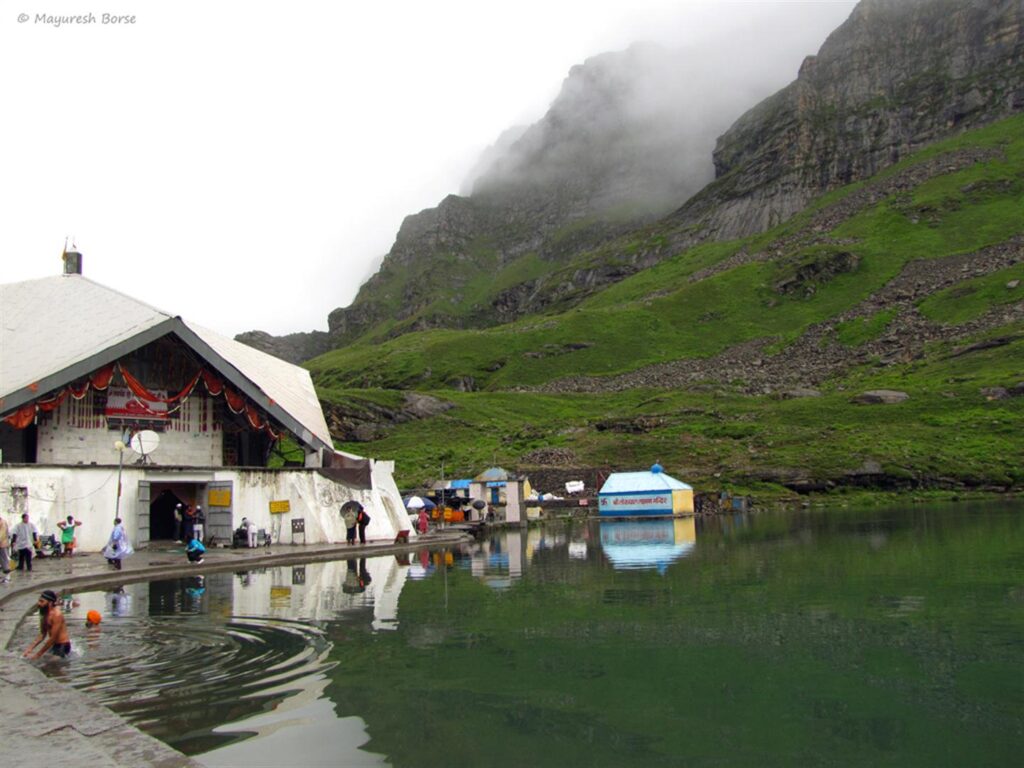
Brahma Kamal – the official flower of the state of Uttarakhand
Brahma Kamal found in the Hemkund Valley is also the state flower of Uttarakhand. In Indian Himalayas, this flower grows at altitudes more than 4,000 metres. And Hemkund Sahib Lake is one of the places that this flower blooms at.
There are many myths and legends related to this flower. Mythologically, Brahma Kamal is said to have bloomed from the belly of Lord Vishnu. One tale says Draupadi used to offer these flowers to Lord Krishna. Another one details that these flowers are offered to Goddess Nanda Devi (who was reincarnated as Parvati – the consort of Lord Shiva) during Nanda Ashtami. The Brahma Kamal has seen references in many tales – including Ramayana and Mahabharata.
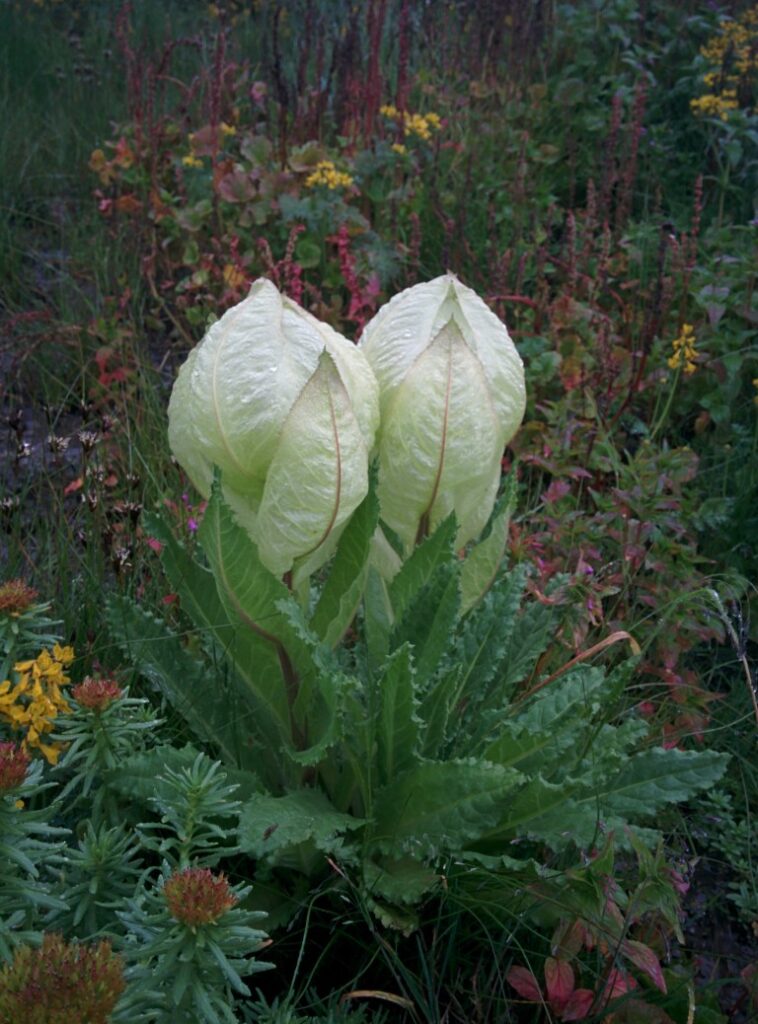
Note : Brahma Kamal grows enroute to and around the Hemkund Lake in the Hemkund Valley. It is not found in Valley of Flowers Valley.
Blue Poppy
While we are on The Valley of Flowers history and mythology, it would be interesting to know more about it in Global reference.
Valley of Flowers’ Blue Poppy is the national flower of Bhutan!
The fragrant Himalayan Blue Poppy found in the Valley of Flowers is indeed the favourite flower of the people of Bhutan. Apart from their beautiful ornamental looks, these flowers also have great medicinal advantages. You can spot these flowers in abundance in both the Valley of Flowers and Hemkund Valley.

A visit to Badrinath
The town of Badrinath is not very far from Govindghat. Shree Badrinath Temple is dedicated to Lord Vishnu and is one of the four dhams. The history of this temple says it was named after badri – a local name for a type of a wild berry which Lord Vishnu loved! When Lord Vishnu sat at this site for penance, his consort Goddess Laxmi turned herself into a berry tree that looked over Lord Vishnu. The temple was then named Badrinath Tirtha. It served not only Lord Vishu but countless other saints and sages who came here to attain enlightenment. Even today, Badrinath Temple continues to be a place for mindful and quiet contemplation for many.

Mana Village and Last Tea Shop of India!!!
Mana Village near Badrinath is supposed to the last village of India (ie on the Indo-Tibetan border) and a Tea Shop at Mana proudly claims that it is “Bharat ki Aakhri Chai ki Dukaan! ie India’s last Tea Stop”!!!
River Saraswati originates near Mana Village.
Bheem Pul
Near Mana Village is the Bheem pul. Legend has it that when the Pandavas of the epic Mahabharata were taking their final journey to heaven called Swargarohan, they could not cross River Saraswati river. When the Pandavas could not cross the river, Bheema brought a huge rock and placed it above the river stream in such a way that it served as a bridge. That rock is now known as the Bheem Pul.

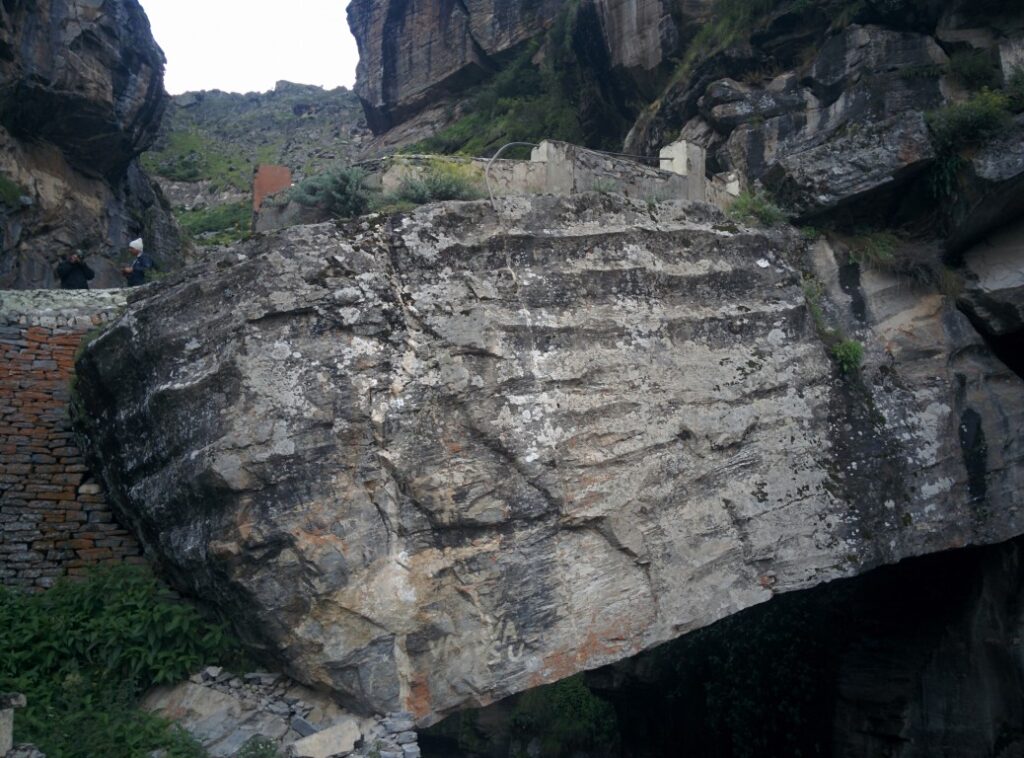
Mahabharat
As per mythology, epic Mahabharat was wtitten in Mana. Maharshi Ved Vyas dictated the epic while sitting under, what is now called as, Vyas Gupha (Cave). Lord Ganesh wrote the same while sitting under Ganesh Gupha.
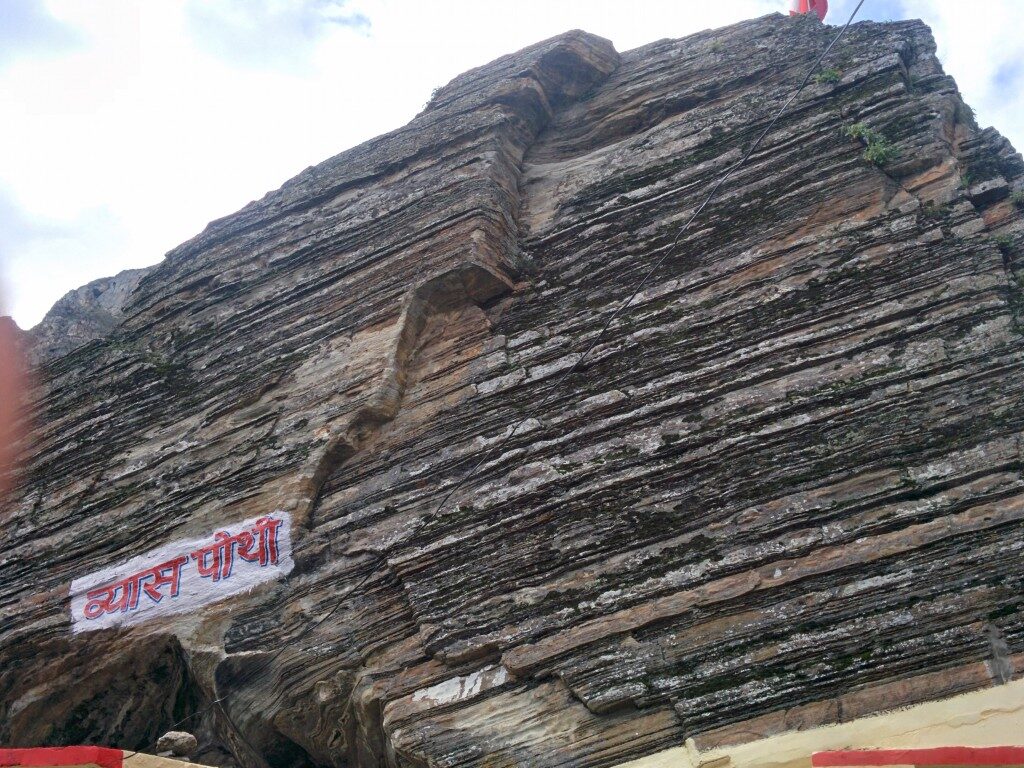
Now that we have divulged the valley of flowers history and mythology to you, we are sure that you are looking forward to visit it.
Do go through our blog post for the same “The Valley of Flowers Trek – Introduction”
It will give you all the details of location, best season to visit, trek distances and so on.
Looking for ready itineraries for Valley Of Flowers? : Click Here
Does Infinite Journeys have fixed departure Group Tours to Valley Of Flowers?
Yes, under the banner of Foliage Outdoors, which is our sister-concern, we do have Fixed Departure Tours throughout the year to Sangla.
Do see www.foliageoutdoors.com or call +91.9822508986 for details.
Can Infinite Journeys customize holidays for you?
Yes. Infinite Journeys specializes in customizing your holidays. Infinite Journeys has Travel Advisors who are well traveled and experienced. They will be happy to share their expertise with you to make your holidays memorable.
At Infinite Journeys, we believe that you should never buy a product off-the-shelf when you can have one that is customized for you.
To help us customize your holidays, we request you to fill the two forms below. It takes 6 minutes only and helps us to customize your holidays.
(This is optional)
1) Tell us about your “Travel Personality” Click Here
2) Details of your Travel Plans Click Here
How to get in touch with us?
1. Please write to web@infinitejourneys.in
2. Call +91.7745866888 / +91.9822508986
3. Click Here for Whats App Chat
4. Visit Office. For address and directions, Click Here
Author : Rahul Bhusari and Aaditee Kulkarni
More about Rahul on : Click Here


